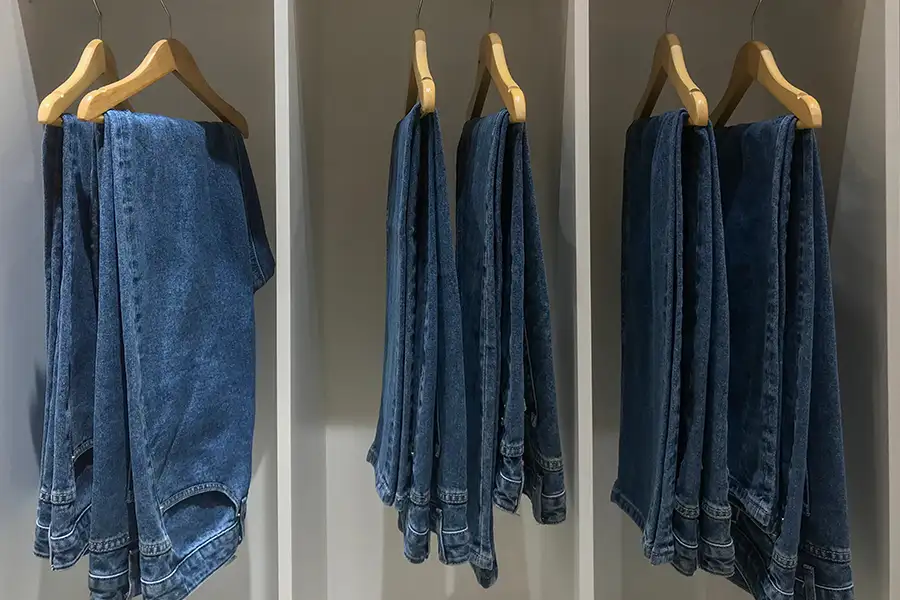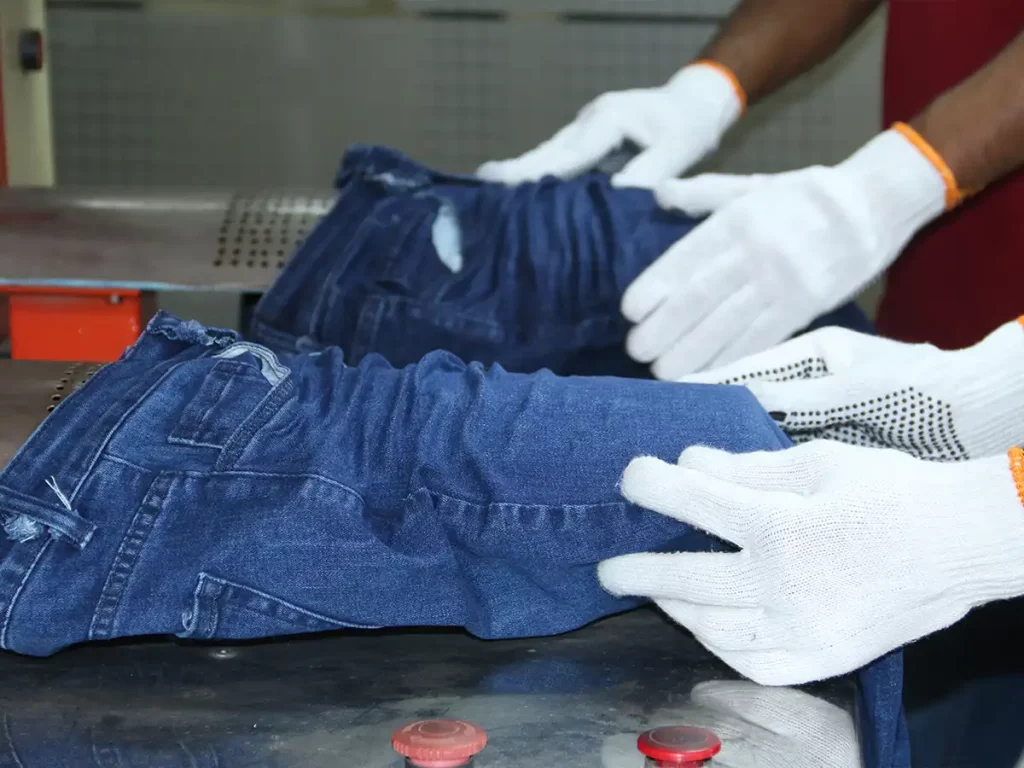Tired of searching for the right partner to bring your fashion vision to life? Look no further! Join us to explore effective strategies to help you source direct from the perfect clothing manufacturer and turn your dreams into reality.
Understanding Your Needs Before Searching

Before embarking on your search, have a crystal-clear vision of your needs. This will pave the way for smooth communication with potential manufacturers.
What’s Your Target Market?
Think about who will be wearing your clothes. Are you designing for trendy teenagers or busy professionals? Knowing your audience will help you choose a manufacturer who specializes in the right styles without losing your money.
How Large is Your Order and What’s Your Budget?
Be realistic about your initial order size and what you can afford. Many custom clothing manufacturers have minimum order quantities (MOQs), so you’ll need to balance your ambitions with your budget.
Start small every time when you add a new manufacturer on your list. Test the clothing they produce for your brand to see if it’s qualified.
Is it Ethical Production?
Today’s consumers care about how their clothes are made. Consider looking for manufacturers or factories who prioritize sustainable practices. It’s good for the planet and can be a great selling point for your brand.
An ethical clothing manufacturer should be transparent in terms of its production process. You can ask any related certifications or videos that stand for its ethical production.
Domestic vs. Overseas Manufacturers: Pros and Cons
Choosing between domestic and overseas manufacturers is a big decision. Let’s break it down:
Domestic manufacturers often offer:
- Easier communication
- Faster shipping times
- “Made in USA” (or your home country) appeal
But they might have:
- Higher production costs
- Limited capacity for large orders
Overseas manufacturers typically provide:
- Lower production costs
- Ability to handle large orders
However, they may have:
- Longer shipping times
- Potential communication barriers
- More complex quality control processes
Consider your priorities and choose what works best for your brand and budget. If your brand focus on small orders adn faster elad time, choose domestic manufacturers. For lower production costs in the long term, try overseas manufacturers.
How to Search for Clothing Manufacturers
Now that you know what you’re looking for, let’s find manufacturers using these methods.
Online Research and Directories
Start with a simple Google search, but don’t stop there. Check out industry-specific directories like Maker’s Row, Sqetch, GarmentEx, or Textile Exchange. These platforms can connect you with pre-vetted manufacturers.
If you’ve made up your mind searching partners in China, read this post to learn how to use these Chinese wholesale websites.
Industry Meetups and Trade Shows
Nothing beats face-to-face interactions. Attend fashion trade shows like Magic in Las Vegas or Texworld in New York. You’ll get to meet manufacturers in person and see their work up close.
Networking and Word of Mouth
Talk to other designers and brand owners. They might have great recommendations or warnings about certain manufacturers. Join fashion entrepreneur groups on platforms like LinkedIn or Facebook.
University and Design School Partnerships
Many design schools have connections with local manufacturers. Reach out to fashion departments at nearby universities. They might be able to get you in touch with the right person.
Social Media and Online Communities
Follow hashtags related to clothing manufacturing on Instagram or join relevant Facebook groups. These can be goldmines for finding manufacturers and getting advice from fellow entrepreneurs.
Picking out the Right Manufacturer

Once you’ve found some promising leads, it’s time to narrow down your options.
Evaluating Samples
Always request samples before committing to a large order. This will give you a clear idea of the manufacturer’s quality and attention to detail.
Checking References and Reviews
Don’t be shy about asking for references from other clients. A good manufacturer should be happy to provide them. Also, look for online reviews, but take them with a grain of salt.
Minimum Order Quantities (MOQ)
Make sure the manufacturer’s MOQ aligns with your needs and budget. Some might be willing to negotiate, especially for new clients with growth potential.
Evaluating Quality Standards
Look for manufacturers with industry-recognized certifications. These might include ISO 9001 for quality management or GOTS for organic textiles.
Learn about Fees, Shipping Costs, and Payment Terms
Get a clear understanding of all costs involved. This includes production fees, shipping, and any potential import duties. Also, discuss payment terms upfront to avoid surprises later.
Key Questions to Ask Potential Manufacturers

When you’re in talks with manufacturers, make sure to ask these important questions:
What types of garments do they specialize in?
Can they handle the specific materials and techniques your designs require, such as fabric sourcing, pattern making, stitching methods, and finishing techniques? Some manufacturers may specialize in certain types of garments, such as knitwear, outerwear, or denim, while others may offer a more diverse range of products.
How long will it take from order placement to delivery?
Understanding this helps you plan your inventory and launch dates. Factors such as order size, complexity of the design, and seasonal demand can influence delivery times.
How often will you receive updates?
What quality checks do they perform throughout the production process? A reliable manufacturer should update you regularly. Inquire about the frequency of updates on production progress, including status reports, sample approvals, and estimated delivery dates.
What happens if there are issues with your order?
Make sure you know well their policies for handling defects or subpar products. Ask about their return policy, replacement procedures, and any associated costs.
Have they worked with brands similar to yours?
This can indicate whether they’re a good fit for your needs. Look for manufacturers who have a proven track record of working with brands that share your target market or aesthetic.
These manufacturers will do a great job understanding you needs, especially when dealing with industry-specific jargon. Some qualified partners may even offer valuable insights based on their extensive experience in the field.
Building a Relationship with Your Chosen Manufacturer
Once you’ve selected a manufacturer, focus on building a strong, long-term relationship.
Effective Communication
Clear, regular communication is key. Be specific about your expectations and open to their expert advice.
Regular Check-ins and Performance Reviews
Schedule regular check-ins to discuss how things are going. This helps catch any issues early and keeps everyone on the same page.
Handling Issues
When problems arise (and they likely will), approach them calmly and professionally. Work together to find solutions that benefit both parties.
Alternative Production Models to Consider
Traditional manufacturing isn’t the only way to bring your designs to life. Consider these alternatives:
Wholesale
Buying ready-made garments wholesale and customizing them can be a good way to start. It’s less risky and requires less upfront investment.
Dropshipping
With dropshipping, you don’t hold any inventory. When a customer places an order, the manufacturer ships directly to them. It’s low-risk but offers less control over quality.
Print on Demand
Great for graphic tees and simple designs. Items are printed as orders come in, eliminating the need for large inventory investments.
How to Start Your Clothing Brand

With your manufacturing sorted, here are the next steps to launch your brand:
Confirm Your Brand Identity
Solidify your brand’s unique voice and aesthetic. This will guide all your future decisions, from design to marketing.
Creating a Business Plan
Map out your goals, target market, financial projections, and marketing strategy. A solid plan will keep you focused and help if you need to secure funding.
Understanding Legal Requirements and Certifications
Make sure you’re complying with all relevant laws and regulations. This might include business licenses, trademarks, and product safety certifications.
Launching Your Product Line
Plan a launch that showcases your brand’s personality. Consider a soft launch to test the waters before a bigger public reveal.
Sustainability Initiatives in the Fashion Industry
Look for ways to incorporate sustainable practices into your brand. This could include using eco-friendly materials or implementing a recycling program for old garments.
Make the Right Choice for Your Brand
Finding the right clothing manufacturer is a journey, but it’s one that can set your brand up for long-term success. Take your time, do your research, and don’t be afraid to ask questions. Remember, the best manufacturer for you is one that not only meets your production needs but also aligns with your brand values and vision for the future.
With the right partner by your side, you’ll be well on your way to turning your fashion dreams into reality. Good luck on your entrepreneurial adventure!







-300x198.png)